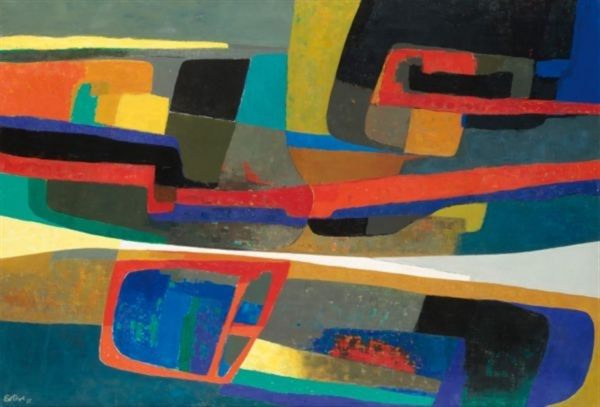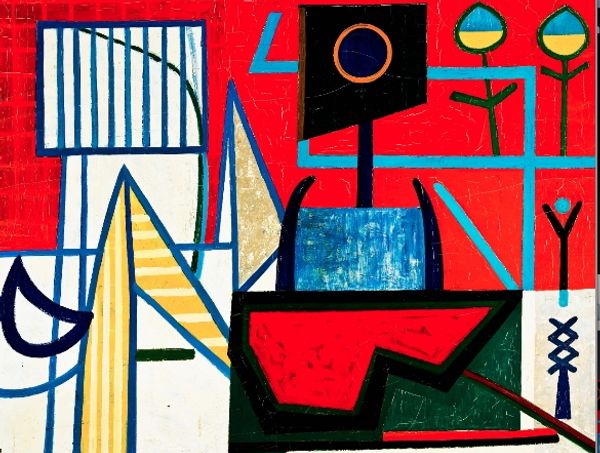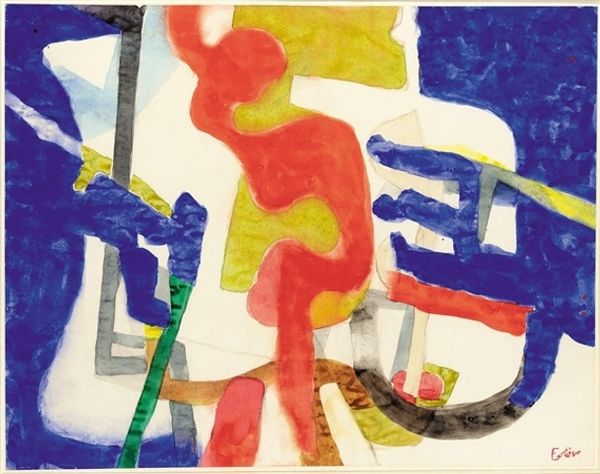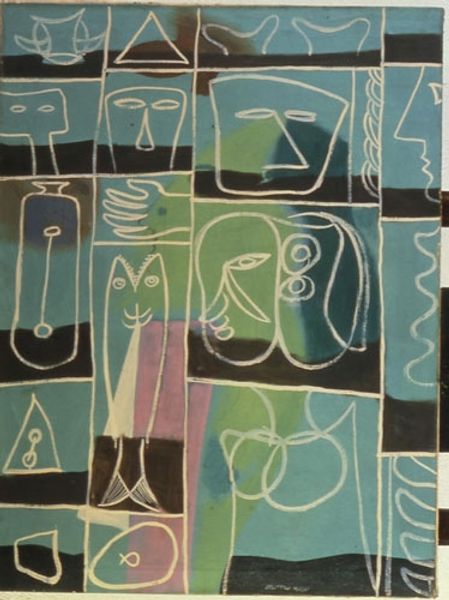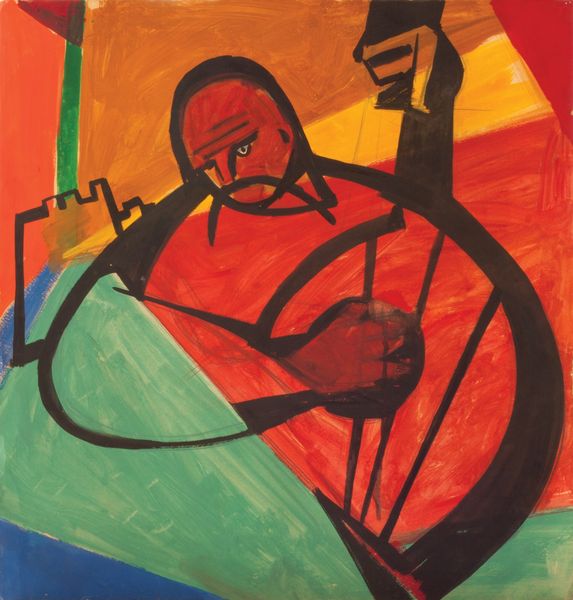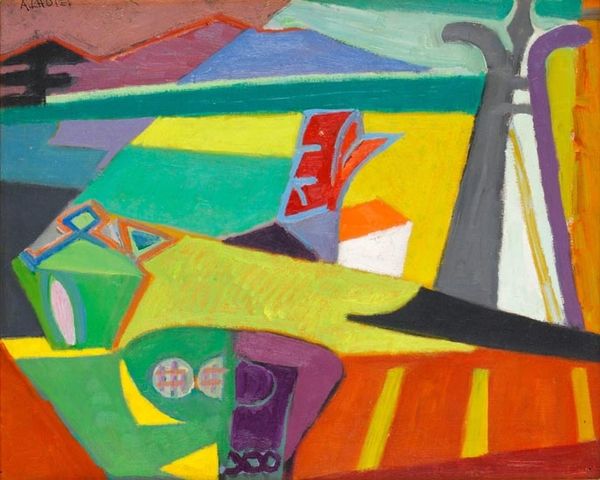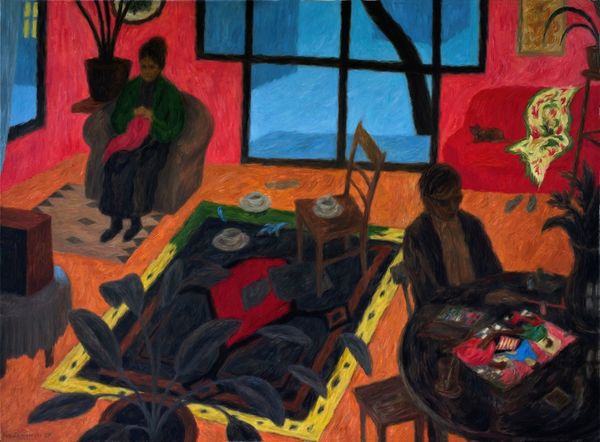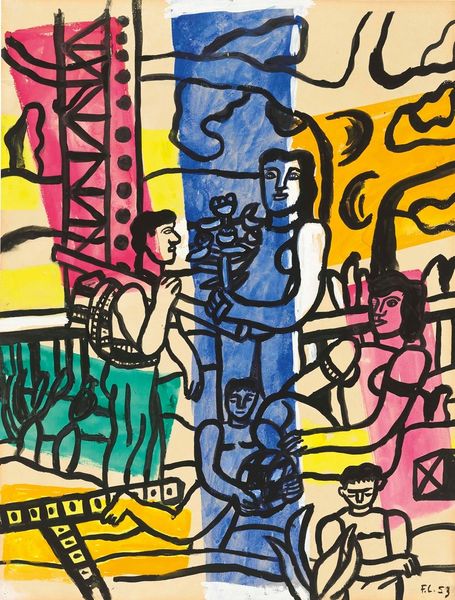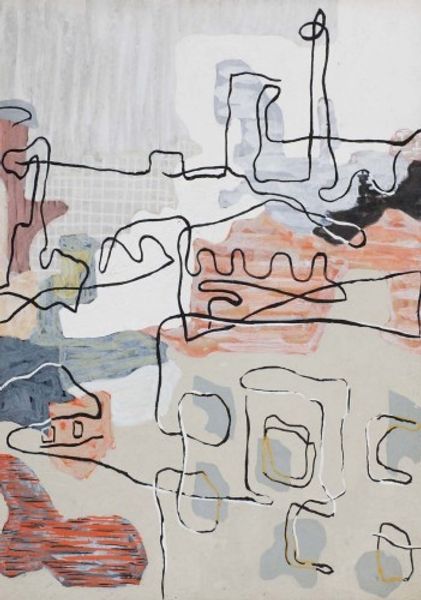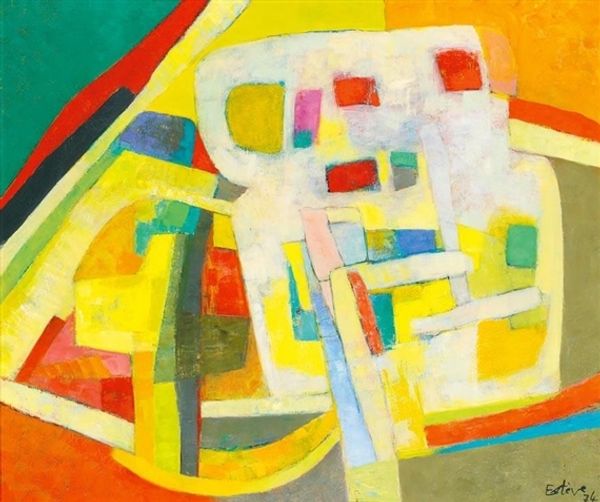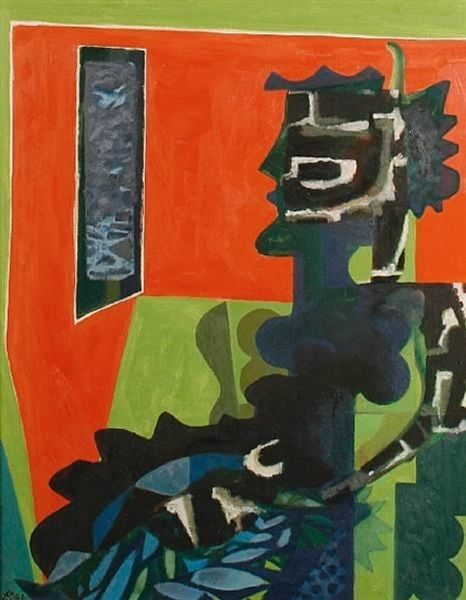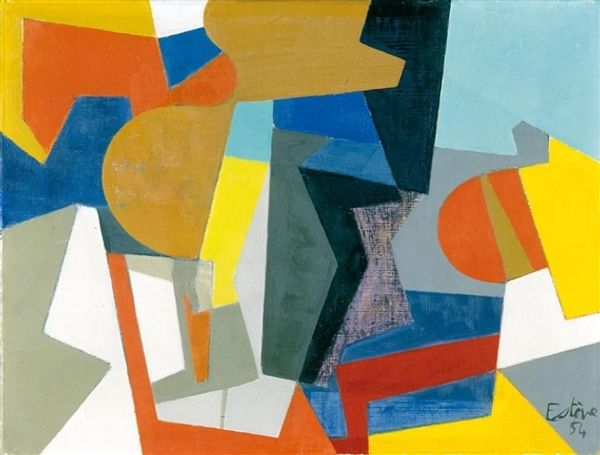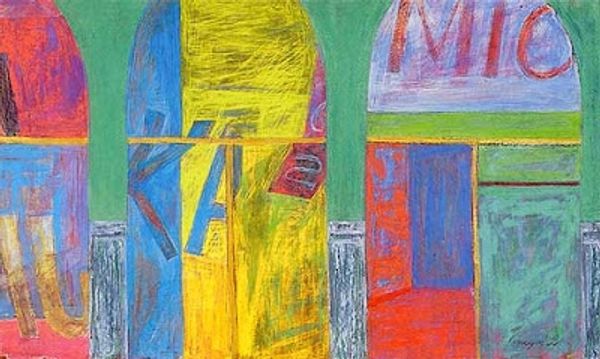
Dimensions: 32 x 49 cm
Copyright: Johannes Itten,Fair Use
Editor: This is "Abstract Figures" by Johannes Itten, created in 1949, and rendered with acrylic paint. The composition is quite striking – these geometric forms seem to be interacting. It feels playful, almost like a game. What do you see in this piece, considering its place in art history? Curator: Well, viewing this work through a historical lens reveals several layers. The immediate post-war context is vital. This painting was created just after the end of World War II. This moment saw a broader cultural shift toward abstraction. Artists felt traditional forms couldn't express the horrors and anxieties of the recent past, or perhaps the optimism for a rebuilt future. What kind of emotions or responses might Itten be provoking in the public who view this type of imagery? Editor: I can see that, a sort of discarding of the old rules. And the figures, though abstract, still feel human in a way. They are gesturing or perhaps dancing? I think this abstract work moves away from established values. Curator: Exactly. Itten had associations with the Bauhaus school, a progressive art institution which was ultimately shut down by the Nazis. Looking at it from the institutional history perspective, what do you make of Itten choosing these flattened shapes and somewhat dissonant colours, versus say, a realistically rendered painting made at that time? Editor: I suppose, painting like this gives greater space to feelings instead of facts, making it more free! Curator: Yes, but don't you think these visual strategies also make this painting seem somewhat opaque to the average museum visitor? This move away from objective rendering requires that we the public have to do much more interpretive labour. How does this influence the public role of art and how might an exhibition of the Bauhaus aim to recontextualize this piece for the modern audience? Editor: That's true. We must come prepared. But in a world so full of rigid structure perhaps this painting suggests we consider alternative angles to established structure. I learned a lot about context in image! Curator: Likewise! Thinking about the public reception is essential. I'm convinced knowing this painting emerges from such turmoil makes appreciating it more pertinent!
Comments
No comments
Be the first to comment and join the conversation on the ultimate creative platform.
